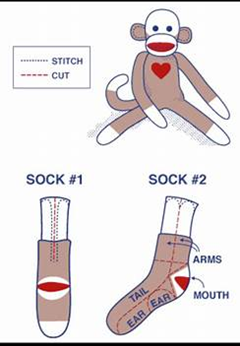Misi-Maskwa: The Great Stiff Jointed Man Eating
Hairless Bear – Institutions, Measurement and schools – 1920-1970ish
In those days the balance was lost and the Misi-Maskwa
the great stiff jointed hairless Bear roamed Turtle Island far from their usual
northern lands. Ever hungry, Misi-Maskwa would stride up and down, back and
forth, to the big waters in every direction looking for food. Their heavy steps
reverberated on Turtle’s shell. They tore off mountains tops to dip in salty oceans.
They mixed up terrible stews – fishes, ferns and even folk. Some days they tore
off bits sky dripping in sunshine to slurp up. The noises were unbearable.
Word of this destruction and terror spread quickly. Some
looked to hide in caves and condos. Some declared certain songs the trouble and
came for tongues. Some said Bear was angry
because Bear was hungry and we should give it more food. Some listened to the Old
ones and prepared. They witnessed and walked with the medicines. They went to
schools that weren’t outside! They practiced their songs and told their truths.
Still other folks went on TV to help us better understand. “Misi-Maskwa is not
all bad! Look at their work ethic. Consider their productivity! 42 mountains
are now easier to climb! There is 14.832 percent less sky to pay attention too!
Complaints about Giant Squirrels are way down!”
Year after year Misi-Maskwa’s hungry rampage continued. Until
there was only one mountain left without teeth imprints or scratch marks. You probably
remember that newscast too! Steady serious voices called to us, “Volunteers
needed to protect this last mountain from the massive paws of terrible
destruction.” My cousins and I packed our things that night.
It was many moons to
arrive at that last mountain. We joined campfires made of many peoples
from all the circles of all the lands.
As is our custom, the Grandparents guided our strategy and
organization as they well know the skills strengths of each person. We gathered
weapons. We sharpened minds. We rested. Until the day the Old ones sent out songs inviting Misi-Maskwa to
the fire to find a less destructive way to fill Bear’s belly.
After a long while, behind the drums of the old songs, we
heard the heavy footsteps of Misi-Maskwa. The TV people told us to stop druming
so they could get better coverage of the massive Bear - LIVE. When the songs
continued, some got angry and pulled drums from our arms and threw drum sticks
to the grasses. “This is history – the people deserve to see the truth – hear
the truth -without your noise.” They would not listen to the advice of the
Grandparents.
The end of the songs and the sounds of folks fighting got
Misi-Maskwa, who was always hangry anyway, into a great rage. The TV people
shone their light up into Bears eyes. Now blinded it ran confused into the
great crowd of people. Each enormous paw
left destruction. My cousins and I observed and grieved, we held steady, ready
to track Misi-Maskwa once its belly was filled and it slowed.
My cousins, we were trackers and workers of medicines and
energies who always found what they searched for – no matter how long it took.
Each knew their job. Each knew when it was time to chase and time to disguise.
So as moons came and went the cousins followed Misi-Maskwa up and down
ruined mountains, through valley’s of monster stews. Sometimes we could see
it’s terrible sharp teeth, furless flesh or a flash of claw through the green
things. We felt fear and hunger and fatigue but still we followed, up and down
and up. Followed up until we were higher than we had even gone. Until we were
almost close enough to touch the tail of the great beast. Using hand talk, so
Misi-Maskwa would not know their plans, we cousins separated to get ready.
Each cousin moved stealthily - forming a circle around
Misi-Maskwa. As we waited for Grandfather Sun to arise and signal the moment of
resolution, we each worked our medicines. From the East a cousin lit Semah and
Misi-Maskwa turned to see the source of the aroma. As the smoke circled Bear’s
eyes were blinded by the rapidly rising sun. From the South another cousin lit
their medicines. These wafted around Bear, calming their anger until they lay
down on the earth. From the East, my cousin lit medicines to help open
Misi-Maskwa’s heart. Finally from the North, my cousin raised their medicines
and songs so that Misi-Maskwa could see how its hunger was hurting Turtle and
everyone who lived on Turtle’s back. “There is enough Misi-Maskwa. Enough for
everyone when we come together as equal.” All day, the cousin voices blended in
great strength and sent healing to that ever hungry tummy so it could know
enough.
Eventually our songs got tired and we fell into slumber.
When we awoke it was night, and when we looked around to see that we had chased
Bear into the sky just below the stars. And where that enormous Bear body had
lain in rest were twinkling stars. So now you know and if you can see, on clear
nights, you can observe Misi-Maskwa above us. A reminder of hard journeys,
using our gifts and the power of cousins. Ho




